







| Common Blue (Polyommatus icarus (Rottemburg, 1775)) |








|
|
Scientific name: Polyommatus icarus (Rottemburg, 1775) Common name: Common Blue French name: Azuré de la bugrane Order: Lepidoptera Suborder: Rhopalocera Family: Lycaenidae Subfamily: Polyommatinae Wingspan: 25-36 mm Biotope: Meadows, grasslands, hills and road sides. Geographic area: Widespread in Europe, North Africa and temperate Asia. Flight time: May to September Number of generations : 2 or 3 (only 1 in the North) Caterpillar: The caterpillar is a green colour. It shows a dark dorsal stripe and yellow lines on each side. Host plant: Common Bird's-foot-trefoil (Lotus corniculatus) , White Clover (Trifolium repens), Common Restharrow (Ononis repens) and many other plants. |
The upper side of the male's wings is violet-blue with a thin black outer margin and a white fringe. The upper side of the female's wings is dark brown with a row of orange submarginal lunules and blue scaling near the body. The orange lunules tend to disappear near the apex of the fore wing while they remain well marked on the Brown Argus (Aricia agestis). The underside of the wings is similar on both sexes. It is a pale brown colour with black marks and orange lunules near the outer edge. Common Blues overwinter as caterpillars. |
| [To know more about the Common Blue] [Next picture] [Top] |
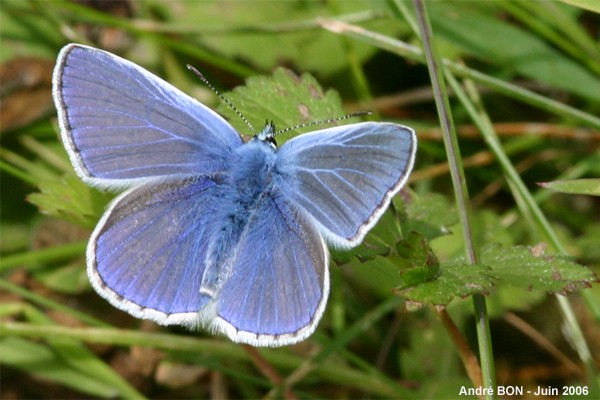
|
Common Blues are rather common butterflies, but not so often can we observe them with wide open wings. |
| [To know more about the Common Blue] [Next picture] [Previous picture] [Top] |
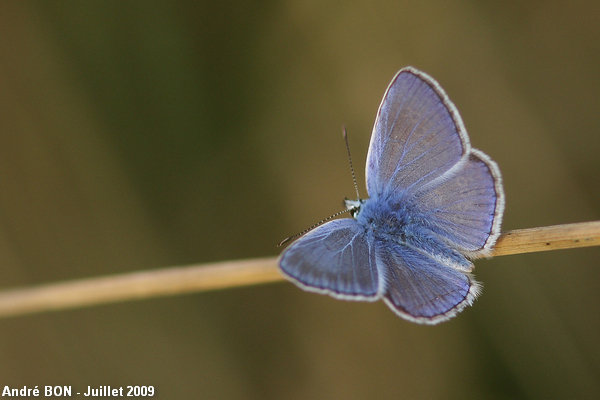
|
I am looking at the fringe first when I see a blue butterfly. I hope to see an Adonis Blue (Lysandra bellargus) which you can tell apart with the marks on the fringe (and with the bright blue colour). However it must be missing in this region as every time I observe a blue butterfly, the final conclusion is that it is a Common Blue. July 2011: Perseverance pays off because I found a small colony of Adonis Blues within three kilometres of my home. |
| [To know more about the Common Blue] [Next picture] [Previous picture] [Top] |
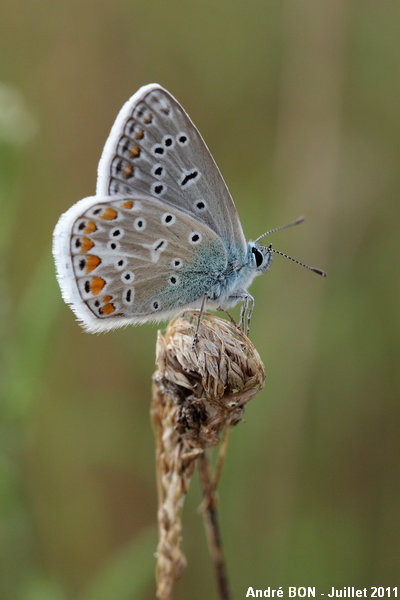
|
View of the under side of the wings. |
| [To know more about the Common Blue] [Next picture] [Previous picture] [Top] |
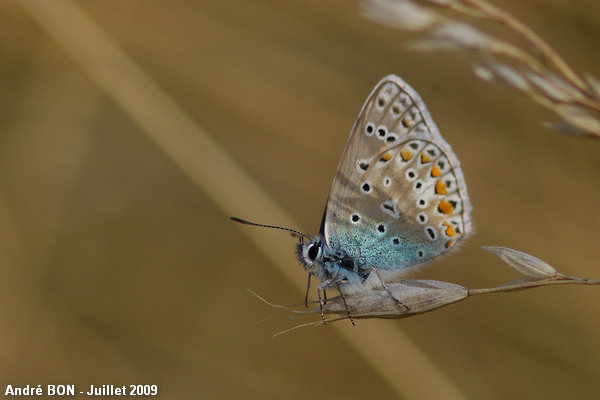
|
I have shot many pictures of Common Blue. This is one of my preferred ones. I am still wondering if the dry grass across the background is a good thing or not. |
| [To know more about the Common Blue] [Next picture] [Previous picture] [Top] |
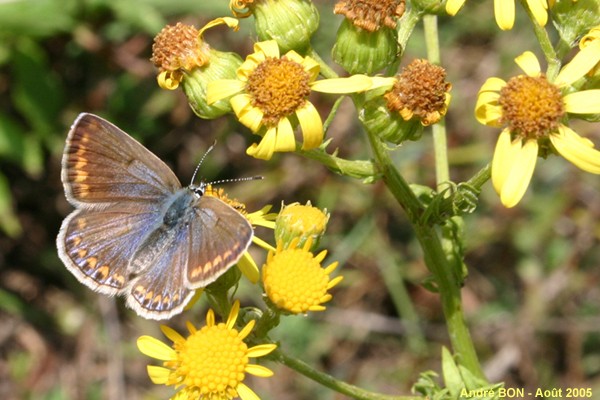
|
The female Common Blue has a dark brown upper side colour. |
| [To know more about the Common Blue] [Next picture] [Previous picture] [Top] |
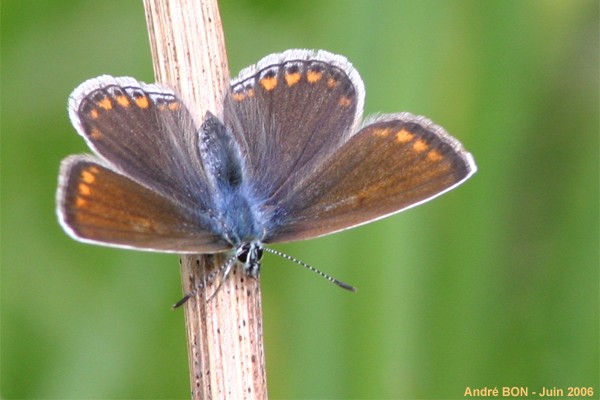
|
The female Common Blue has a dark brown upper side colour with a flash of blue toward the body. |
| [To know more about the Common Blue] [Next picture] [Previous picture] [Top] |
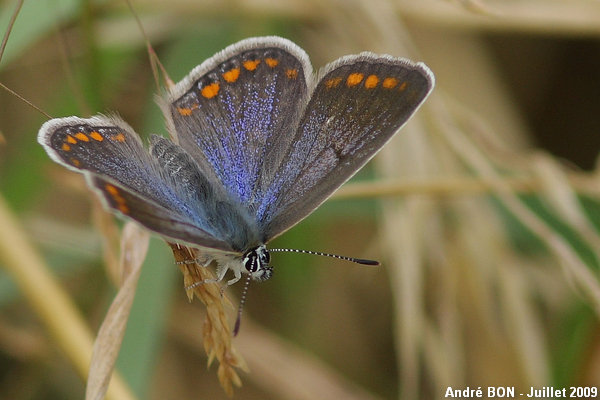
|
The blue scales are clearly visible on this female's picture. |
| [To know more about the Common Blue] [Previous picture] [Top] |
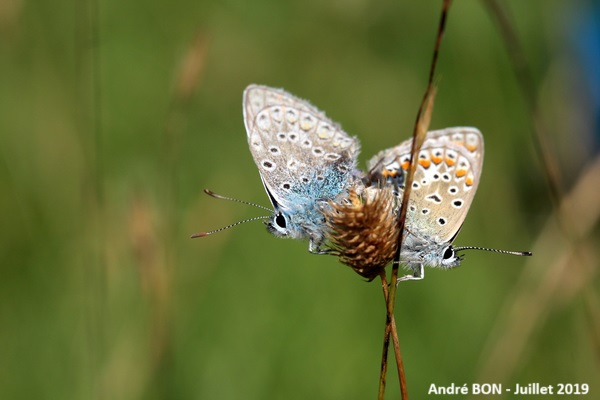
|
Mating. |